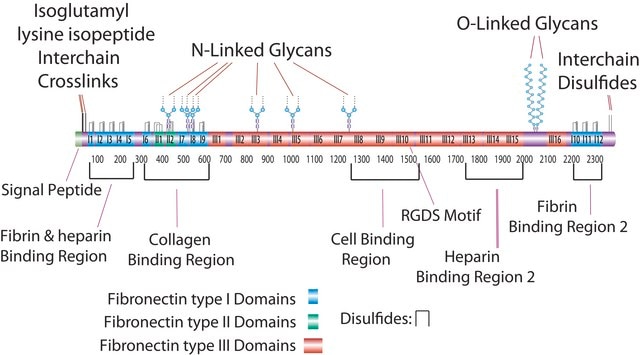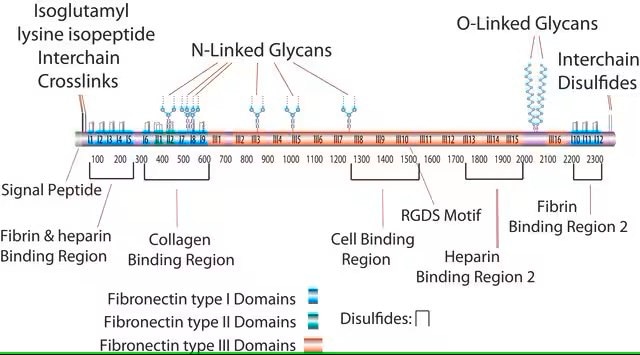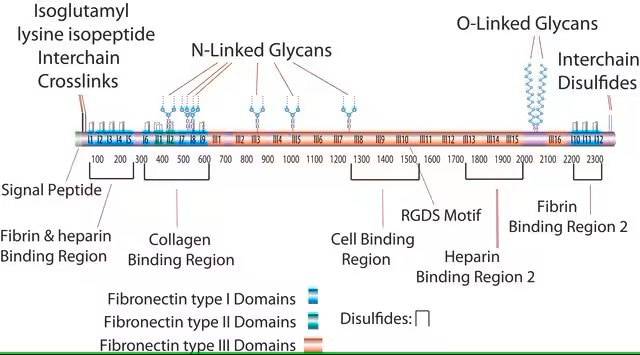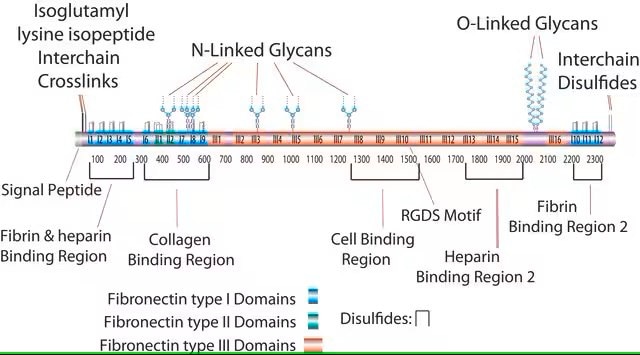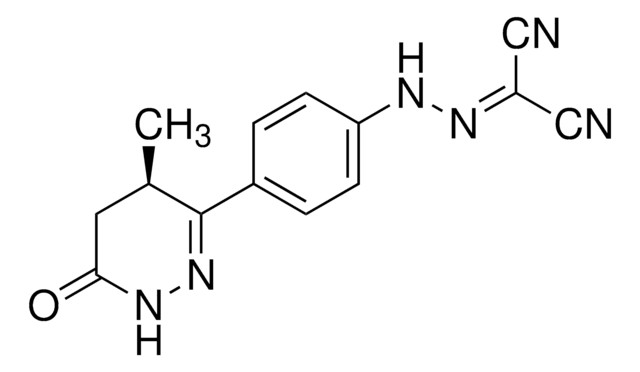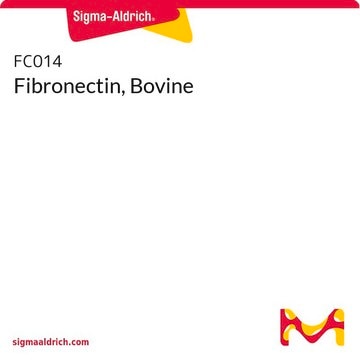F0895
Human Fibronectin
from human plasma, liquid, 1 mg/mL, suitable for cell culture
Synonym(s):
Fibronectin
About This Item
Recommended Products
product name
FIBRONECTIN FROM HUMAN PLASMA, liquid, 0.1% (Solution), BioReagent, suitable for cell culture
biological source
human plasma
Quality Level
sterility
sterile
product line
BioReagent
form
liquid
packaging
pkg of 1 mg
pkg of 2 mg
pkg of 5 mg
concentration
0.1% (Solution)
technique(s)
cell culture | mammalian: suitable
surface coverage
1‑5 μg/cm2
solubility
saline: 0.05 M (Tris-buffered)
UniProt accession no.
binding specificity
Peptide Source: Collagen
shipped in
wet ice
storage temp.
2-8°C
Gene Information
human ... FN1(2335)
Looking for similar products? Visit Product Comparison Guide
Related Categories
General description
FN occurs as a dimeric protein, linked by two disulfide bonds at the end of C-terminal. Within the fibronectin structure, the domains are compactly arranged close to both the amino and carboxyl terminal of the peptide chains. Moreover, it has been observed that despite arising from a single gene up to 20 distinct variants of this gene have been identified in humans.
Application
Biochem/physiol Actions
Features and Benefits
- Adhesive glycoprotein
- Derived from human plasma
- Recommended surface coverage of 1-5 μg/cm2
Preparation Note
In coating culture surfaces, fibronectin should be diluted in sterile balanced sterile salt solution and coated with minimal volume. Surface should then be air dried for 45 minutes at room temp and can be stored for 2-4 weeks at 2-8°C
Analysis Note
Legal Information
Disclaimer
related product
wgk_germany
WGK 1
flash_point_f
Not applicable
flash_point_c
Not applicable
Certificates of Analysis (COA)
Search for Certificates of Analysis (COA) by entering the products Lot/Batch Number. Lot and Batch Numbers can be found on a product’s label following the words ‘Lot’ or ‘Batch’.
Already Own This Product?
Find documentation for the products that you have recently purchased in the Document Library.
Customers Also Viewed
Articles
Fibronectin (FN) is a multifunctional, extracellular plasma glycoprotein produced by hepatocytes that circulates at near micromolar concentration and assembles into extracellular matrix fibrils at cell surfaces along with locally produced cellular FN.
Attachment Factors for 3-Dimensional Cell Culture
The extracellular matrix (ECM) is secreted by cells and surrounds them in tissues.
3D cell culture overview. Learn about 2D vs 3D cell culture, advantages of 3D cell culture, and techniques available to develop 3D cell models
Protocols
Dilute fibronectin to the desired concentration. Optimum conditions for attachment are dependent on cell type and application. The typical coating concentration is 1 – 5 ug/cm2.Fibronectin coating protocol, products, and FAQs.
Our team of scientists has experience in all areas of research including Life Science, Material Science, Chemical Synthesis, Chromatography, Analytical and many others.
Contact Technical Service